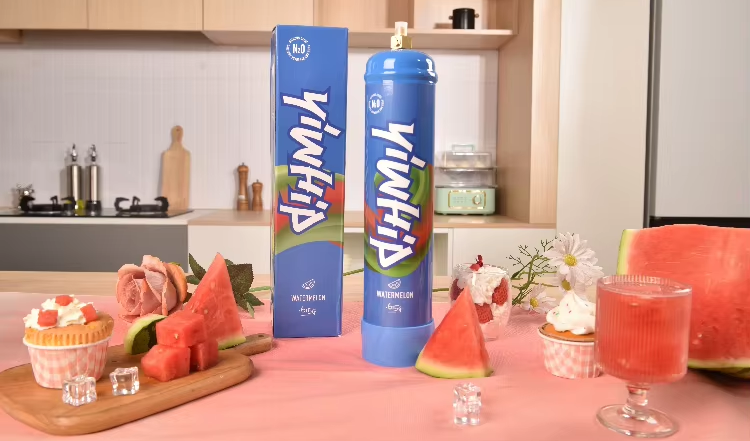Welcome to the ultimate guide on choosing the right nitrous oxide chargers for your needs. If you've ever made whipped cream at home using a cream whipper or experimented with nitrous oxide (commonly known as laughing gas) for culinary use, you’ve probably come across these small canisters in stores, online, or maybe even in specialty shops. While they’re tiny, these cartridges have a big impact — they can elevate a simple dish, help you prepare quick and fluffy creams, or even enhance certain scientific processes. But here’s the real question: with so many brands and types available, how do you know which nitrous oxide chargers are right for you?
1. What Exactly Is a Nitrous Oxide Charger?
To begin with, nitrous oxide (N₂O) chargers — sometimes spelled ‘cartridges,’ ‘chargers,’ or simply referred to by brand names like Nang (common in slang), or product-specific titles like 'Whippits,' depending on context — are pressurized containers that hold compressed nitrous oxide gas.
Their most popular application? Cream dispensers. Also known as soda siphons or whipping cream chargers, these devices rely on N₂O cartridges to force the contents out while also infusing it with a light, creamy consistency perfect for desserts, cocktails, or savory foams used in modernist cuisine.
Other common uses involve automotive applications (e.g., performance-enhancing NOS kits), medical tools such as pain relievers in labor wards, dentistry sedation devices, aero-fooding techniques, and some specialized aerosols in laboratories. This guide will mostly focus on consumer-based, kitchen-friendly usage since that's the area in which most people interact with this kind of equipment.
Example visual concept of 5 common household uses of Nitrous Oxide (image not provided but suitable when published).
2. Why Does the Right Charger Make a Difference?
If all those metal canisters look similar to you, you might ask why it's worth taking extra time to compare and choose one brand over another — after all, each charger is essentially doing one thing: releasing nitrous oxide. That said, not all chargers deliver the same quality. Let’s explore why selecting a good-quality cartridge matters for both safety and taste outcomes:
Consistency: Low-quality canisters may contain impurities or less nitrous per unit than premium products — this leads to poor texture, weak aeration (in whipped cream), or under-flushed results.
Safety & Design Integrity: Poor manufacturing can result in faulty sealing threads that don’t connect cleanly into your whippers, increasing leakage risk — possibly even leading to accidental pressure bursts. This poses a clear danger in food-preparation areas, especially with repeated exposure over time.
Taste neutrality: Higher purity grades prevent off-gassing, meaning no added chemical smells or metallic tang. Top-tier suppliers invest more in filtration and purity standards before filling their canisters — so you get only pure N₂O gas, not trace pollutants from subpar storage or cheap industrial leftovers.
You’ll find the best performance, longest-term reliability, flavor integrity, and safety when investing even slightly more money into certified and verified suppliers or major branded names like Best Whip, Whip-It!, or the professional-grade products used in Michelin-starred cafes or restaurants relying on daily foam-making techniques through advanced kitchen gadgetry like iSi systems.
3. Common Sizes and Types of Chargers Explained
- 16g Canister – Most widespread in culinary use due to standard size for home and commercial cream siphons.
- Larger Variants – Occasionally seen for bulk-use kitchens (like event catering services, hotels).
- Premier Commercial Versions – Designed for compatibility with specific high-output cream gun models used by large restaurants needing high-pressure consistency without refilling hassles.
Note: Always double-check what volume your appliance is rated for – many hand-hold cream whips require specifically designed disposable 16g-sized chargers only; attempting to jam other sizes in may damage equipment, reduce efficiency, void warranties, or become potential sources of injury upon improper installation.
A comparison between different sizes of nitrous oxide cylinders.
Beware of counterfeit or refillable knockoffs often imported via online gray-market channels or sold unbranded. These pose significant threats in terms of pressure tolerance and material composition—especially critical if used around hot kitchen environments, near electrical components (as some modern whippers operate on battery heat activation), and during disposal.
4. Things You Must Do Before You Buy One Online or In Person
Avoiding scams, getting authentic nitrous chargers, and ensuring full compatibility begins long before pressing the checkout button on Amazon, eBay, or local grocery retailers’ websites. Below are several important check points:
- Review Your Device Manual. The simplest place to determine whether that new shiny silver nitro capsule suits your existing setup: check the specs inside your cream whipper instruction booklet (digital versions downloadable from manufacturer sites usually include exact requirements).
- Determine Frequency and Volume of Use: Casual bakers may go fine ordering a pack of ten to twenty units, stored safely until needed. High-turnover dessert bars or bakeries must consider bulk packaging deals — but always be wary of suspicious sellers advertising “wholesaler-level discounts" for absurdly low rates (hint: you likely won’t know what chemicals went into them — assuming actual N₂O at all).
- Don’t Get Tempted by Overpriced or Underpriced Units. There definitely is a minimum market price per functional nitrox canister, accounting for production cost, shipping logistics, import tax laws regarding medical gases or consumables (varies regionally), and basic hygiene testing procedures applied before consumer delivery. Pay too little and chances grow that you're dealing with old surplus stock (often degraded or compromised due to environmental conditions), potentially unsafe fill levels (too little or excessive internal gas), or mislabeled weight/volume claims.
- Look For Certifications When Available: Depending on region/country legality, reputable sellers usually show certifications from bodies responsible for food-grade handling and industrial purity compliance boards. U.S.A.-based users should ensure all retail-packaged nitrous oxide cartridges meet federal OSHA and Department of Transportation regulations concerning non-medicinal recreational/industrial/craft gasses — particularly crucial when purchased in states enforcing age limits or distribution controls due legal issues arising from recreational abuse (misuse warnings apply and we strongly caution against misuse of nitrous cartridges for inhale purposes without licensed supervision or clinical guidance).
Conclusion: Finding Balance Between Cost and Convenience in Your Search for a Good Supplier
In the end, making a choice doesn't just revolve around reading ingredient labels on tiny silvery cartridges—it boils down to being mindful about where to purchase, recognizing trusted distributors (Amazon Basics, restaurant supply warehouses carrying certified food-grade supplies such as WebstaurantStore), and knowing precisely what features influence successful operation of cream whips and foam guns.
In closing thoughts, remember the four Cs:
- Compatibility: Check your device's manual or technical sheet for precise nitrous cylinder sizes allowed and preferred gas output ratings (some older models require higher pressure to fully function).
- Cost Per Cartridge Matters – Compare offers by checking average $ per individual unit, rather than getting caught up just looking for a big package discount or lowest-priced box — you're buying air in some scenarios if content integrity is unknown.
- Content Purity: Repeated complaints around chalkiness, bad taste residues post-pressured whipping indicate inferior product sourcing or poor sealing causing ambient contamination over time.
- Customer Service Options: Choose vendors allowing easy return options or support staff familiar with foodservice gear in general — especially helpful if problems arise like defective lots (malfunctioning seals, rust-colored interior walls within chambers).
Return Home

